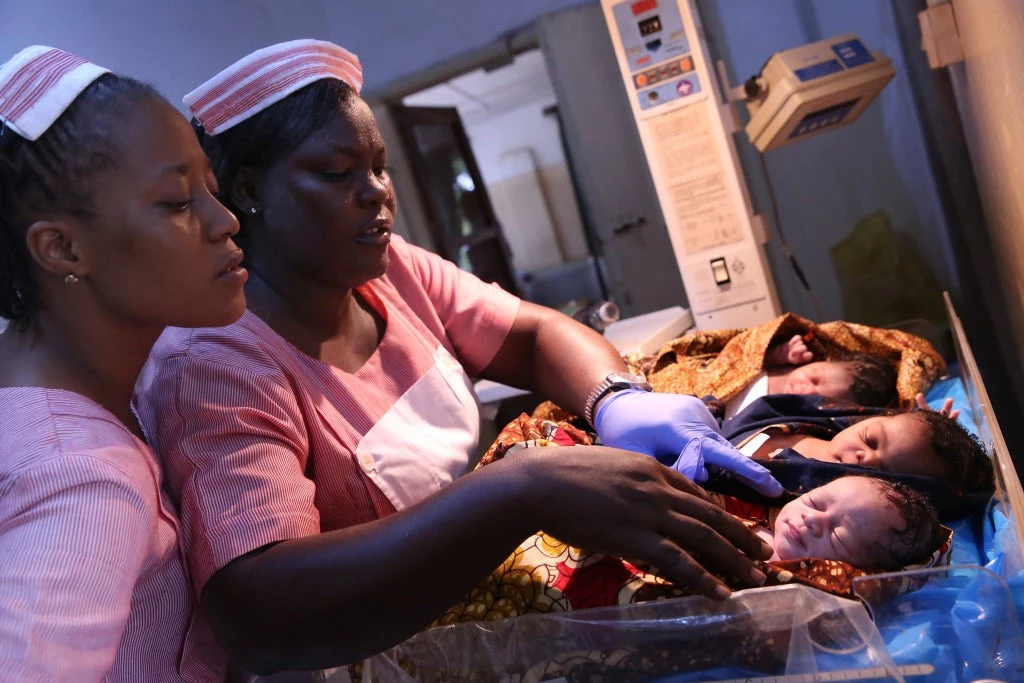
On the eve of the Summit for a New Global Financing Pact convened later this month by the government of France, many of the world’s poorest countries face a host of competing policy priorities while struggling to raise the funds to address them. In the wake of the COVID-19 crisis, developing countries need to regain losses in health and learning, arrest increases in hunger and poverty, and counter climate change. Yet, most developing economies have not returned to their pre-pandemic growth path, and in many of them, government spending is expected to stagnate or contract for years to come. As both public debt and interest rates have increased, interest payments divert increasingly large shares of government funding from critical investment priorities.
The summit will explore options to increase financial solidarity with the global south, supporting countries to increase their fiscal space, help resolve debt challenges, and aim to move rapidly to address national development goals. One of the summit’s focus areas is health, for three decades recognized as a mainstay of long-term growth, in many places, however, insufficiently funded to make any meaningful progress toward the health-related sustainable development goals. To turn the tide, we must forge a new path with three critical changes in the way we finance health.
Stronger domestic health financing
While greater international financial solidarity can bridge some immediate funding gaps, there is no sustainable path forward without governments prioritizing health in their own spending. They have a choice. In the wake of the global financial crisis, for example, several developing countries bolstered their investments in health despite cuts in their overall spending envelopes. Also, most low and lower middle-income countries prioritized their spending on health during the COVID-19 recession. Regrettably though, in many of them the share of health in government spending has started to fall, often already below pre-COVID-19 levels. We cannot afford to wait for a return to sustained economic growth and expanding government spending envelopes to mobilize the necessary funds to meet pressing health challenges.
More efficient and equitable spending is also needed as it is not only critical to get more health for the money but also to facilitate decisions to grow investments in health. Improvements in the management of public finances, for example, can give ministries of finance and parliaments confidence that additional funds for health are spent well – from ensuring the timeliness and rigor of budget submissions to improving execution rates and adopting forms of performance budgeting. Expenditure reviews can identify opportunities to shift funding from low or ineffective programs to those with higher impact, both within health as well as across sectors. Introducing or increasing taxes on health damaging products, such as alcohol, tobacco and sugar sweetened beverages, can not only improve health outcomes, but also reduce the long-term sector spending needs, and as seen in the Philippines and Indonesia, raise much needed revenue. For the successful implementation of these and other policies, collaboration between health and finance is critical.
Better external financial support
The next generation of development assistance for health must yield greater returns. This requires a renewed commitment to the principles of aid effectiveness outlined in the Paris Declaration, Accra Agenda for Action, and the Busan Partnership for Development Cooperation. Despite the fragmentation of global funding arrangements, countries and partners together can greatly advance in aligning external financing with national goals, harmonizing funding mechanisms, coordinating technical assistance, and channeling funds through country systems.
More development assistance is also needed especially for the low and lower-middle income countries where economic activity and government spending are stagnating or contracting. After a decade of little growth in assistance, donors reported substantial increases in their disbursements in response to COVID-19 for 2020 and 2021, however, at the cost of reductions for non-COVID-19 essential health services, including maternal and child health. Development assistance for health cannot fall now but must remain on a growth path to support countries in making their health systems pandemic-proof and redressing setbacks from service disruptions on the path toward Universal Health Coverage.
Greater investments in health systems
Increases in external and domestic spending will not accelerate progress toward the health SDGs unless larger shares are directed towards strengthening health systems. While investments targeting infectious diseases have dramatically reduced the burden of HIV, tuberculosis, and malaria, country capacities to address non-communicable diseases (NCDs) and rapidly mobilize a response during outbreaks and pandemics have been chronically underfunded (WHO/WB 2017). Today, non-communicable diseases account for 74 percent of all deaths globally, with 77 percent of them in low and middle-income countries.
The COVID-19 crisis forged a broad consensus that new investment is needed in areas ranging from sufficient and motivated skilled health workers and effective supply chains to well-working public health laboratories and health information systems. Investments to strengthen these critical health system building blocks must focus on expanding the coverage and improving the quality of primary health care and community health services. I have had the opportunity to see promising approaches on this front during my recent travels in Indonesia, Morocco, Egypt, and India. In most health systems, governments will need also to strengthen their way of working with the private sector as a major provider of health-related goods and services. The COVID-19 crisis also demonstrated the urgent need to invest and strengthen health system institutions and governance, including health financing competencies and organizational capacities.
Seizing the COVID-19 crisis as an opportunity
The COVID-19 pandemic stressed the tremendous cost of underinvesting in health. We cannot let the pandemic slip as an opportunity to change the way we finance it. Greater, better aligned, and more effective investments that strengthen health systems are needed from both external and domestic sources. We at the World Bank will continue to work with countries and with other organizations to support this paradigm shift.


Join the Conversation